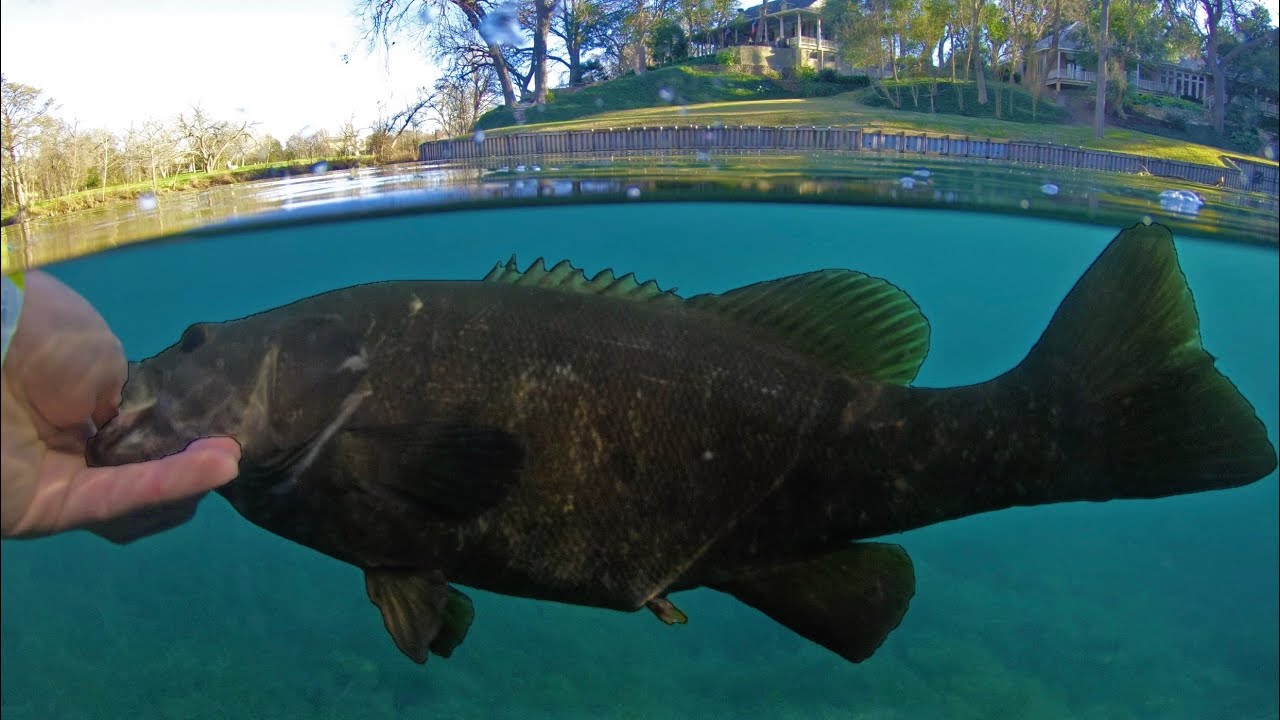Contents
Kayak Fishing on Shallow, Moving Water
A kayak, a spin casting rod, and a crawfish lure add up to a fun fishing trip on a small river.
Fishing kayaks are equally useful for angling on still water and moving water. Kayaks allow fishermen to float down shallow rivers where drift boats can’t go. Add the right tackle and lure for the location, and fishing success just has to follow.
Check Water Depth
A scouting expedition to the river helps the angler plan a successful fishing trip. Smallmouth, like other bass species, like edges. These can be edges of submerged rock or other structure, or the edges of deeper pools next to shallow, fast-moving water. Estimating river depth at various points will give fishermen a good idea of where to find fish.
Examine Insect and Aquatic Life
Walking the bank and wading the shallows reveal much information about what the bass are eating. When crawfish are scuttling about the gravel surface of a river, it’s a good bet that they are a part of the smallmouth’s diet. In deeper, murkier water, minnow lures are a good choice. The idea is to mimic something that the fish already consider a food source.
Control is Vital in a Current
Maneuvering a kayak on moving water requires more frequent use of the paddle than does drifting slowly along a lake bank. Casting a fly rod is too much of a juggling act in this situation. Something is nearly certain to land in the river. Anchoring the craft is always an option and wading would be another possibility. Kayak fishermen must stay aware of the proximity of fast water. Unless the angler is prepared to carry the kayak back upriver, constant vigilance is required.
Line, Lures, and Other Tackle
For working the riverbank while moving along the current in a kayak, basic spin-casting tackle works fine. A 6-lb. line is heavy enough for smallmouth fishing in shallow rivers. Lures that can be worked across the river bottom, such as crawfish and tube baits, provide attractive motion when brought in with a stop-and-go rhythm. Crawfish lures can be hard or soft, and there are even crawfish flies tied from light, feathery materials. Catching on rocks as it is pulled along causes the lure to pop up and sink down with a realistic swimming movement. A small sinker may be required to pull the lure down to the river bottom.
Hooking and Landing the Fish
Smallmouth strike with a definite, quick attack, much like a largemouth. When the angler feels the smallmouth take the bait, it is best not to try to set the hook too soon. This can result in the disappointment of losing a fish when the lure is pulled away. Waiting for just an additional instant can make all the difference. Once hooked, smallmouth are strong fighters. Fish intended for release should be handled as little as possible, and then with wet hands. Often, the fish can be brought to the side of the boat and released without ever lifting it completely out of the water.
Keep or Release?
A bass usually will be hooked in the lip. Occasionally, the lure will be deep in the fish’s throat or caught in the gills. Gently probing with forceps may free the hook. When this is unsuccessful, cutting the line and leaving the lure in place gives the fish the best chance for survival. A fish that is bleeding more than a little from the throat or gills is one for the frying pan.
Whether fishing for a camp dinner, for photographs or just for fun, catching smallmouth bass in a river is exciting angling.

